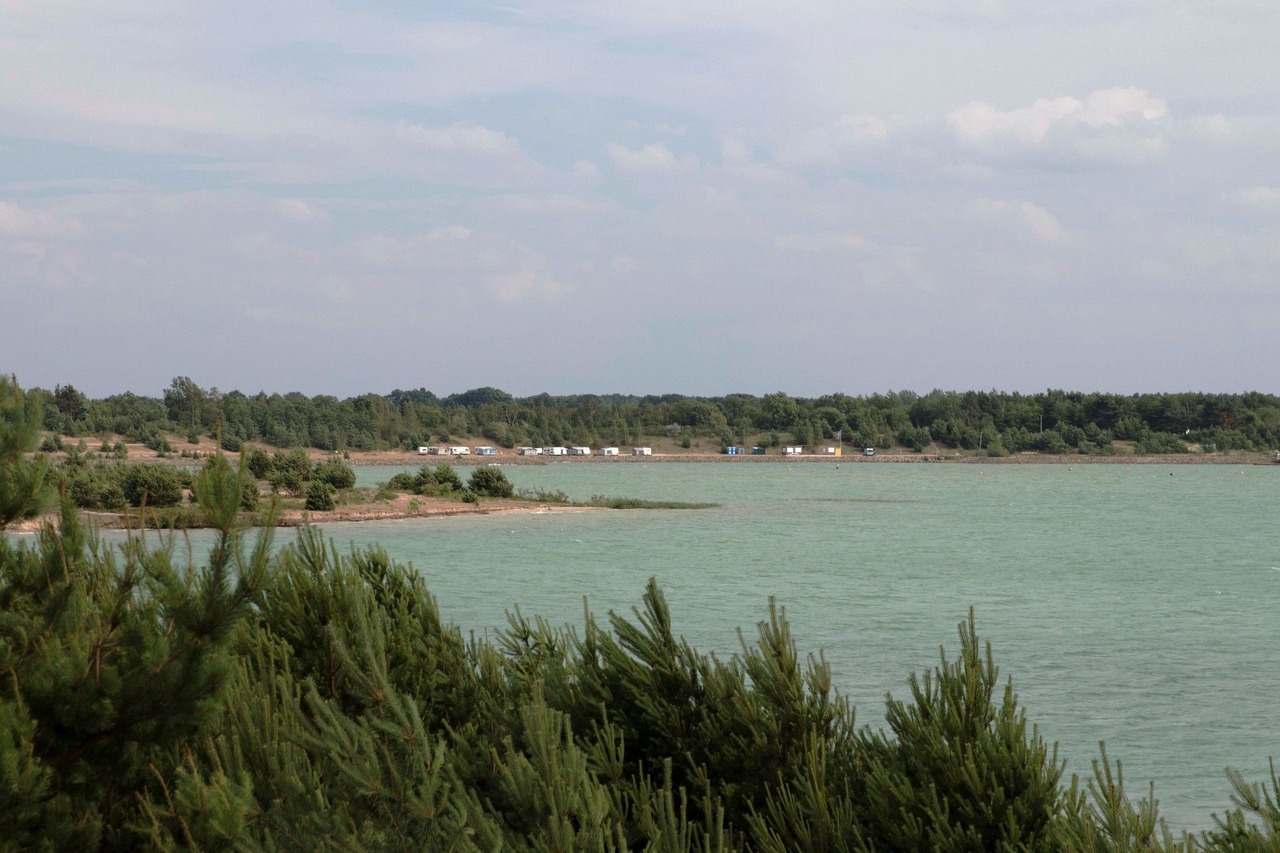Partwitzer See owes its name to the village of Groß Partwitz. The lake has its origins in the Scado opencast mine. About 239 million metric tons of coal were extracted from that pit from 1940 to 1977. This roughly equals the mass of almost 160 million cars. Nowadays, Partwitzer See with its characteristic long peninsular is one of the largest lakes in the Lusatian Lake District. It has a water surface of over 4.3 square miles (11.2 km2). This space could accommodate some 1,600 football fields.
The village of Groß Partwitz was sacrificed to coal mining in the early 1970s. A memorial at the end of the old road between Klein Partwitz and Groß Partwitz commemorates the vanished village. Today, Klein Partwitz belongs to the municipality of Elsterheide, one of the largest municipalities in the district of Bautzen in terms of surface area. The municipality was established in 1995 and comprises nine Sorbian villages on nearly 50 square miles (129 km2). Bergen is the main settlement and administrative centre.
Klein Partwitz emerged in the Middle Ages. The name derives from the Sorbian term para for swamp or bog. In fact, today’s Partwitzer See used to be the site of large-scale fish farming. Klein Partwitz is characterised by its numerous three- and four-sided farms that are typical for Central Lusatia. The village moreover boasts several beautiful avenues mostly lined by oak and lime trees that in part are over 100 years old. Since 2006, the first floating house in the Lusatian Lake District has been the maritime landmark of Klein Partwitz. The construction is a popular holiday home.

